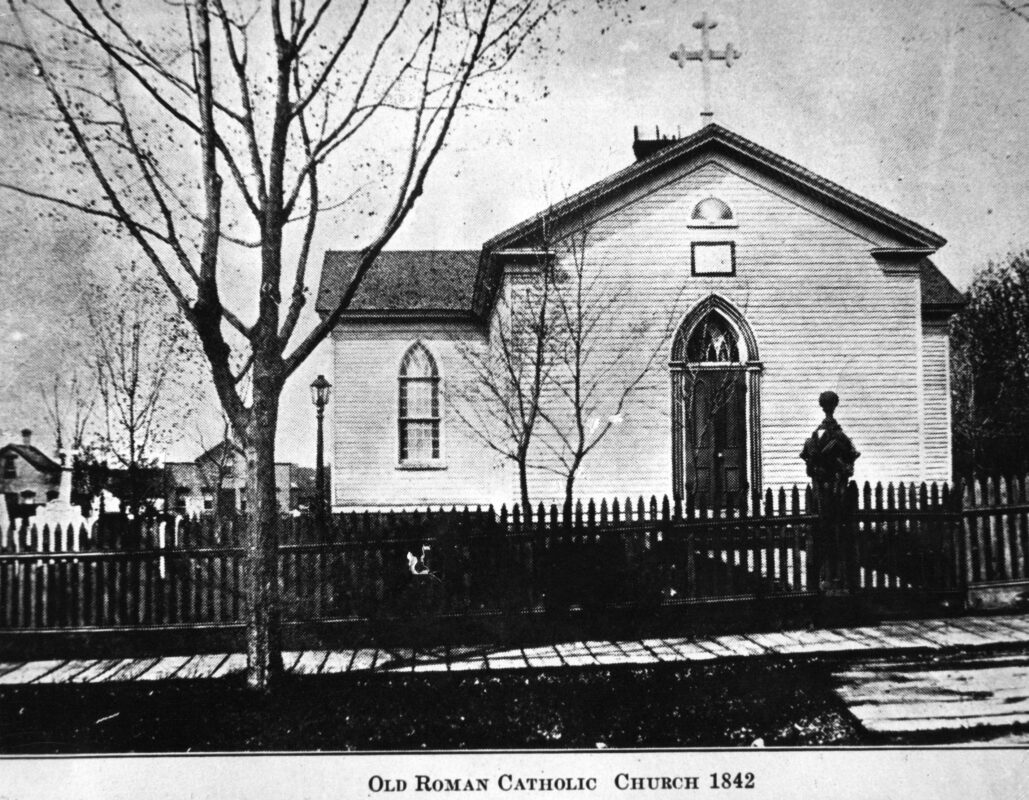St. Gregory the Great Roman Catholic Church
Samuel Pedlar and Dr. Kaiser both trace the origins of this parish to the 1840s when the first church was constructed, but prior to this, Catholics in the area had their religious services in McGrigor’s School House or with travelling priests in parishioners’ homes. Funds for constructing the first church were supported by community members, such as Patrick Wall, Daniel Leonard, Denis Duella, Michael Curtin, Sir Arthur Santry, Richard Supple, John O’Regan Sr., and Captain Dunn. Throughout the years, the parish grew, and improvements took place, such as church enlargements, building of a separate school, presbytery, and stable and driving house, and aesthetic improvements.
Nearly 50 years after the construction of the first church building, the parish saw the need to expand once again and began fundraising. The cornerstone was laid in 1894, and the new building was dedicated in June 1895. It was noted that two men, James Daley and Patrick Wall, were at the dedication of both churches, half a century apart.
The windows of the church were made by McCausland & Sons, the plans for the structure were made by Post & Homes, and much of the interior oak woodwork, like the altar, pews, pulpit, and organ, were made by Oshawa’s RS Williams. It was made in the French Romanesque style and can accommodate 500-600 worshippers.
There was originally a cemetery beside this church. To facilitate the building expansion, it was removed to its present location along Simcoe Street, just north of Beatrice Street. In 1893, Father MJ Jeffcott contacted family of those laid to rest at the original cemetery and co-ordinated the removal of bodies and headstones to the ‘new’ cemetery. The last of the bodies and headstones from the original cemetery were moved in 1927.
St. Gregory’s would remain the only Catholic Church in Oshawa until Holy Cross was constructed in the 1930s.







